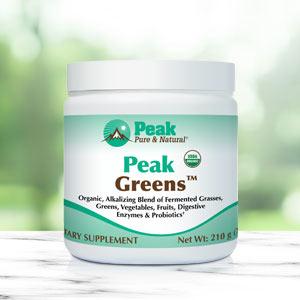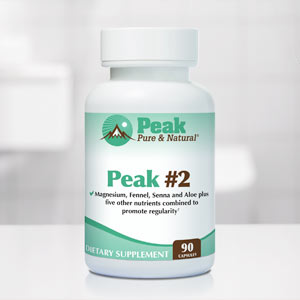Get Easy Health Digest™ in your inbox and don’t miss a thing when you subscribe today. Plus, get the free bonus report, Mother Nature’s Tips, Tricks and Remedies for Cholesterol, Blood Pressure & Blood Sugar as my way of saying welcome to the community!
What is ‘Ghost Poop’ and what it signals about your health

Talking about ‘ghost poop’ is all the rage on social media this fall.
But it has nothing to do with the spooky season.
In fact, despite the scary-sounding name, having ghost poops is actually a boo-tiful sign of gut health and something we should all aim for.
Here’s everything you need to know about ghost poop — from why they’re the healthiest type of bowel movement to what they signal about your hydration level, diet and overall digestive health.
Plus, we’ll go over the easy steps to optimize your gut health and have this phantom-themed bathroom experience more often.
What does it mean to have a ‘ghost poop’?
I’ll admit the term ‘ghost poop’ threw me for a loop when I first heard it. To be honest, the first thing that came to mind was poop that was ghostly white, and I had to wonder how in the world that could be healthy.
However, it turns out that having a ghost poop has nothing to do with its color.
Instead, it’s a bowel movement that seems to disappear down the toilet without flushing. And there’s no sign of it when you wipe — thus earning its spooky title.
This occurs due to a number of factors having to do with gut and digestive tract health:
- These types of stools are heavy – Ghost poops are packed with fiber, which makes them sink to the bottom of the toilet. This is in contrast to unhealthy stools, which tend to float due to excess gas or malabsorption of carbs or fats.
- They’re well-formed – Healthy ghost poops also have a good mix of water content, so they’re not too loose (like when you have diarrhea) or too hard (like what you experience when you’re constipated).
- They slip out easily – With ghost poop, you don’t have to strain because your gut muscles and sphincter work together in perfect harmony to push them out.
- There’s no residue – When you wipe after a ghost poop, there’s no messy residue thanks to the balanced level of fluids and fat in the stool.
With this in mind, it’s easy to see why having a ghost poop is a sign that your gastrointestinal tract is working well.
How often should I have a ‘ghost poop’?
While ghost poop is a sign of good gut health, you might not experience this type of poop regularly, due to fluctuations in poop habits and gut microbiome levels, on top of variations in diet, hydration, and stress levels.
But don’t worry. Not having poop that disappears down the toilet in a flash doesn’t necessarily mean that your gut isn’t healthy — as long as you’re not dealing with diarrhea and constipation regularly.
However, it you’d like the “neatness” of ghostly poops, you can have them more often by making a few simple lifestyle tweaks.
Start by balancing your hydration levels with your fiber intake.
That’s because too much fiber, along with too little water, will leave you with hard, bulky stools and cause constipation. If you tend to go to the other extreme and drink too much water, while getting too little fiber in your diet, you can end up with loose, messy, diarrhea-like stools.
Drink enough water so that your urine is a light, pale yellow. Clear can signal overhydration, while amber means dehydration. Consider throwing mineral water into the mix to get some much-needed magnesium, which has a mild laxative effect.
As for fiber, aim for 25 to 35 grams per day. Try to eat at least two cups of fruit and two and a half cups of vegetables every day. Fiber-rich fruits and veggies include raspberries, guava, kiwi, avocados, artichokes, dark leafy greens, beans, lentils and chickpeas.
You can also up your fiber with whole grains, such as pearled barley, which rings in at six grams of fiber per cup. Whole nuts, like almonds, deliver 3.5 grams in every one-ounce serving.
If you still have trouble, experts say the pooping process is easier when you use a stool to elevate your feet so your knees are above hip level. This mimics a more natural squatting posture and helps reduce straining, especially during constipation, which has been recognized as an overlooked factor for cardiovascular events, like a heart attack.
Editor’s note: There are perfectly safe and natural ways to decrease your risk of blood clots including the 25-cent vitamin, the nutrient that acts as a natural blood thinner and the powerful herb that helps clear plaque. To discover these and other secrets of long-lived hearts, click here for Hushed Up Natural Heart Cures and Common Misconceptions of Popular Heart Treatments!
Sources:
What Is a ‘Ghost Poop’ and Why Is It Such a Strong Indicator of Your Gut Health? – SELF
What Is ‘Ghost Poop.’ What Poop Shape Says About Your Health – Forbes
Constipation is associated with an increased risk of major adverse cardiac events in a UK population — American Journal of Physiology-Heart and Circulatory Physiology














